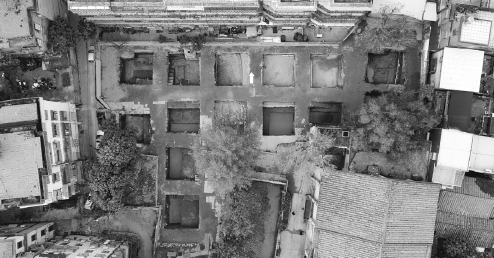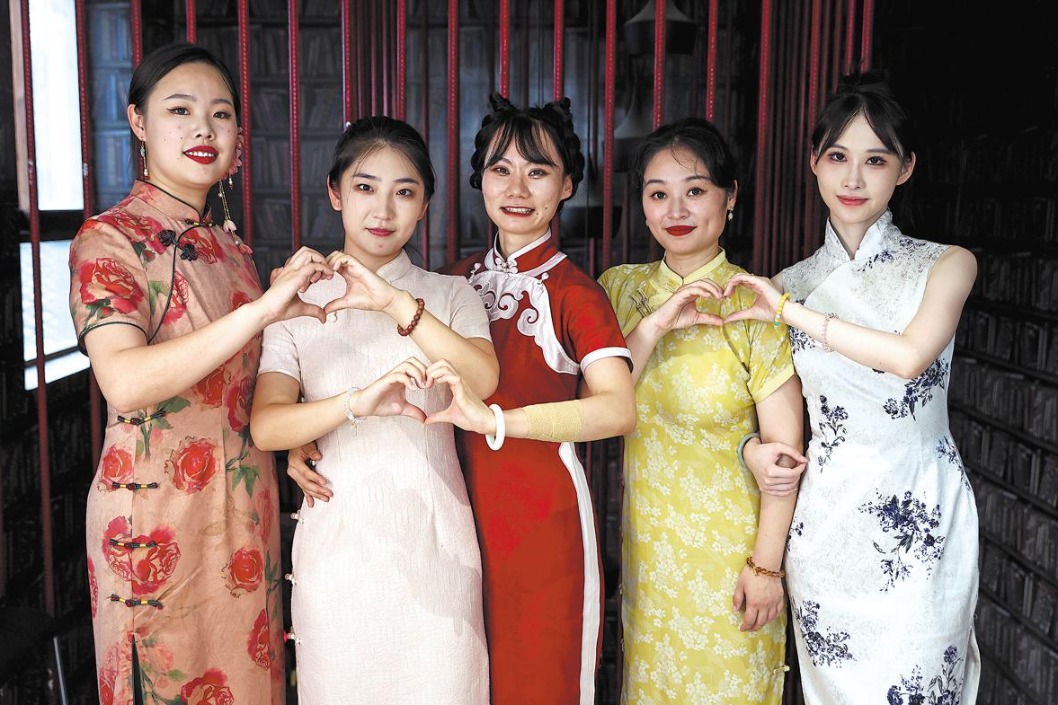Revealing glories of the past
Once-forgotten techniques used in construction in previous centuries still remain relevant for today's builders, Wang Ru reports.

Since Wang Bo, a researcher at the Institute of Archaeology of the Chinese Academy of Social Sciences, joined archaeological work in Quanzhou city, East China's Fujian province, at the end of last year, he couldn't help wandering the streets and alleys of the old city in his free time. He was amazed by the traditional Chinese wisdom shown in the construction of the city in ancient times.
"Quanzhou's construction in many ways shows the thoughts of Kanyu, or Chinese geomancy, which is a part of traditional Chinese culture. So with the guidance of Kanyu's thought system, we can clearly see the development of the city construction," says Wang.
His findings pointed the direction for the archaeological work. After more than a year's efforts, the current achievement of the work was summarized in a seminar held in Quanzhou on Dec 11.
Organized by the Institute of Archaeology of CASS, the Bureau of Cultural Heritage of Fujian province and Quanzhou people's government, the seminar collects more than 30 essays from experts on various fields of Quanzhou's archaeological work, and some of them reported their findings during the seminar.
According to Wang, since last April, experts from the Fujian Museum's archaeological institute, the Institute of Archaeology of CASS, and the School of Archaeology and Museology of Peking University joined the team in carrying out archaeological work in Quanzhou, as part of China's world cultural heritage application project to UNESCO.
Archaeologists made a general excavation plan, and excavated the Xiacaopu iron production site in Qingyang village, Anxi county, the sites of Dehua kilns, the southern clan office and maritime trade office. The four sites are among the 22 sites of historical heritage highlighted in the project.
Wang, the leader of archaeological team excavating the sites, southern clan office and maritime trade office, says their work "basically proves the existence of the two sites".
The southern clan office was a government sector that functioned from 1133 to 1277 to administer the imperial clan members who moved to Quanzhou during the Southern Song Dynasty (1127-1279). The maritime trade office was an official agency in charge of maritime trade from 1087 to 1472 in Quanzhou spanning the Song (960-1279) and Yuan (1271-1368) dynasties.
"We have found remains of some construction which show they were of high level in ancient China, and they were built according to strict official mapping, which was only used in official constructions. Words on some cultural relics unearthed also prove they are official constructions," says Wang.
"With the help of historical literature, we can basically infer the existence of the two sites, identify ranges of them and their construction techniques, which are similar to some ancient constructions we had found in Luoyang city, Central China's Henan province," he adds.
According to An Jiayao, director of the Silk Road Archaeological Specialized Committee of the Archaeological Society of China, "The existence of the official sites shows the political status of Quanzhou in ancient times, besides its important role as a commercial center."
According to historical literature, Quanzhou in the Song and Yuan dynasties was a port city with prosperous trade and cultural exchanges. "A large number of construction remains, like the stone pillar with features of Hinduism in Kaiyuan Temple, show Quanzhou's role in cultural communication," says Hang Kan, a professor from School of Archaeology and Museology of Peking University.
He also mentions former archaeological work have found sunken ships in the city, referring to its past glory in maritime trade. "The ship, inferred to have been used in the Song Dynasty, has already had advanced structure for fear of water leakage, making it advantageous in maritime trade," Hang says.
Hang says future archaeological efforts in Quanzhou will focus more on its complete city system, instead of on isolated sites. "For example, we have excavated some kilns and found some ancient porcelain items, but that's not enough. We still need to know more, like how the ancient people got raw materials to make porcelain, what techniques were used in the production, and in which routes the items were transported to overseas countries.
"These are all further questions we need to explore in the future. A city cannot exist alone, but must have a complete system to support its operation. We want to understand the whole system," says Hang.
"The city leans on the Chinese mainland and faces the sea both geographically and culturally. From this angle, our archaeological work in Quanzhou is not just trying to understand this single city, but its role in cultural communication and passing down cultural heritage, which is important for the whole world," says Shi Jinsong, deputy director of the Institute of Archaeology of CASS.
Hu Meidong contributed to this story.


Today's Top News
- China to open its door to foreign investment wider
- China criticizes Canadian tariffs on products containing Chinese steel
- US legislative chaos undermines its democracy
- Why China is irreplaceable in supply chain
- China's FDI inflow tops $700b since 2021
- Australia, China set to bolster steel partnership






























